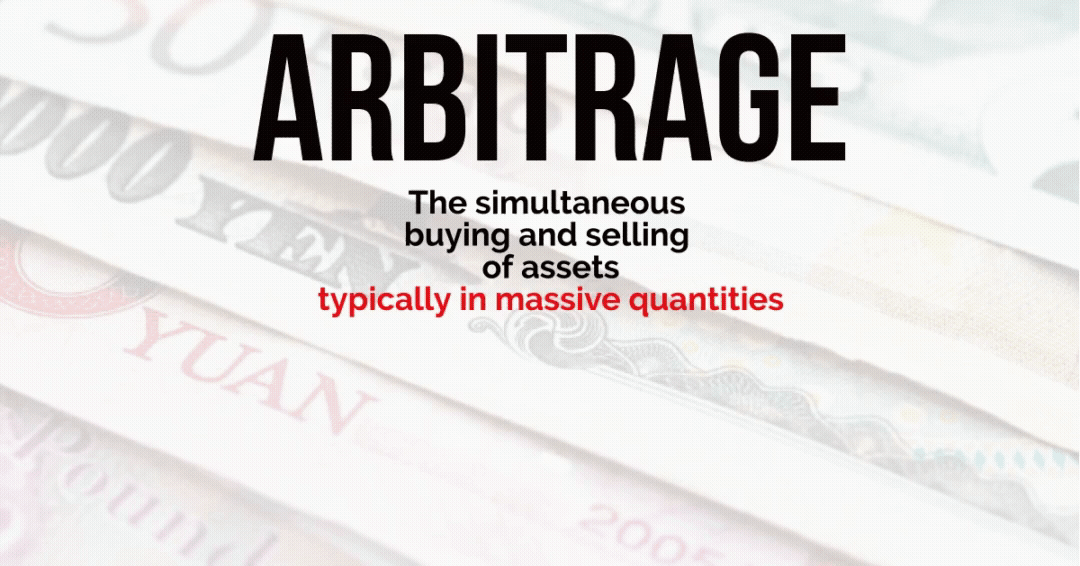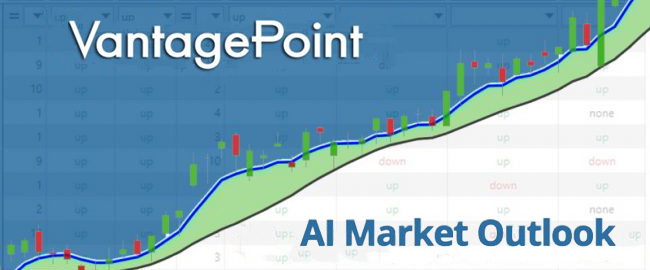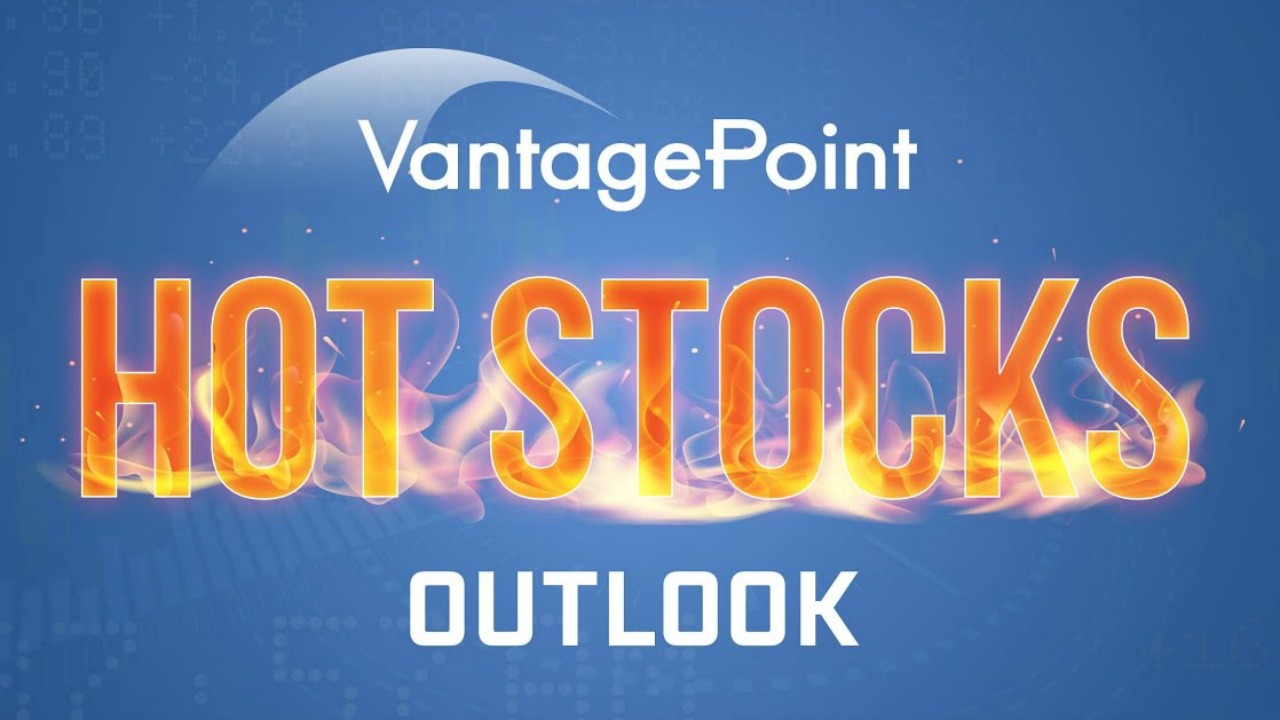If you study financial markets for any period of time, you quickly come to realize seasoned traders become very aware of “risk” and gravitate immediately towards trading styles and techniques that help them to understand and eliminate it. One concept which is extremely powerful is financial arbitrage.
Arbitrage is defined as the “simultaneous” buying and selling of assets to receive an immediate riskless profit. This can be done with stocks, commodities, and options and is considered to be the playground of the super sophisticated trader and investor. Most arbitrage techniques are traditionally not available to the small speculator. Often, these opportunities require large amounts of capital to be able to execute, or special relationships with exchanges and trade clearing organizations to make the trade worth your time and effort. In this article you’ll find a handful of arbitrage opportunities that can easily drive traders to better understand and exploit these powerful alternatives.
When you look at stocks you can understand that the same security trade around the world in many different time zones, different currencies, and local exchanges. So, let’s say you are looking at a stock and it is trading at $99 per share in Tokyo and at $99.50 per share in New York. What an arbitrageur would do is simultaneously execute orders to buy it in Tokyo for $99 and sell it in New York for $99.50. That ½ point may not sound like much of a profit but arbitrageurs will execute these trades with tens of thousands of shares to create an instant yield based upon the price differential. For many years, the major Wall Street houses have developed proprietary software designed to find and exploit these opportunities all over the world.
The concept is very easy to understand.
- Find a highly liquid popularly traded asset.
- Have software monitor the price differential, also known as the basis, of the asset 24 hours a day to be able to identify legitimate arbitrage opportunities in international markets.
- Execute the arbitrage trade when a large enough price differential exists worthy of your capital, time, and energy.
Top Wall Street traders have exploited this tactic for many years. In days gone by, large traders had very low commissions, huge credit lines and very solid business relationships with the exchanges/clearing houses who accounted and balanced out their trades. Today these same opportunities exist but they have become ultra-competitive as every top Wall Street trader is trying to find and execute these identical arbitrage trades at the same time.
It’s easy to comprehend why arbitrage trades are not available to the average small speculator. Sometimes these types of trades are only available for a few minutes or hours before the pricing differentials in international markets, which make them work return to an equilibrium.
However, as hard as it might be to believe, one of the most exciting arbitrage trading opportunities exists in the commodity futures markets.
This marketplace came into existence as a “price insurance mechanism” for producers of the underlying commodity. Imagine that you currently have $1 billion dollars of Corn in your inventory. How do you define “risk” in this situation? As an owner of the cash market, your risk is defined as a lower price of corn. Under this reality, producers who are not interested in taking risk, would sell $1 billion dollars’ worth of Corn in the futures market so that they are balanced, not exposed to price risk and can simply go about their normal business. If the price continues higher you make money on your inventory and lose it on your futures position. If the price goes lower, you make money on your futures position and lose it on your cash position. In other words, you are market neutral and 100% hedged.
To understand arbitrage possibilities in this market we need to review a few basic concepts that describe the why and how certain pricings occur in the marketplace and how producers take advantage of them, when these opportunities present themselves.
Imagine that you are a farmer of Corn and Soybeans. As a producer there is a cycle for this market which everyone is subject to. Farmer’s plant and harvest their crops at roughly the same time.
This reality greatly affects the supply and demand characteristics of any market. Expectations related to weather, government policy, storage costs, financing, international demand, competition, etc., all have an effect on how and what producers do with their crops. If prices are too low at harvest, farmers can store their crops in a grain elevator before they liquidate their inventories. They can also insure their crop against loss. But these are additional costs which a producer takes into account when they price the commodity at different stages of the production cycle. So, the very first question is very basic, what is the calendar saying about the market? The calendar is not creating a forecast per se, but rather a pricing terrain which all producers need to contend with. In other words, it is pricing the additional costs and risks associated with the production cycle of the underlying commodity.
When the future price is higher than the current spot price, the market is considered to be in “contango.” This simply means that market participants and pricing mechanisms all think that over time, in the future, the price will be higher than it is currently. If you were to draw a graph of this condition it would look like a forward sloping curve. Traders sometimes monitor this by simply looking at the spread, which is the difference in prices between the forward month and the distant months. When the distant months trade at a premium to the current month, a “contango” exists.
Conversely, when the spot market trades at a premium to the distant months the market is considered to be in “backwardation.” The relationship among prices at different points across the curve is a function of supply and demand expectations.
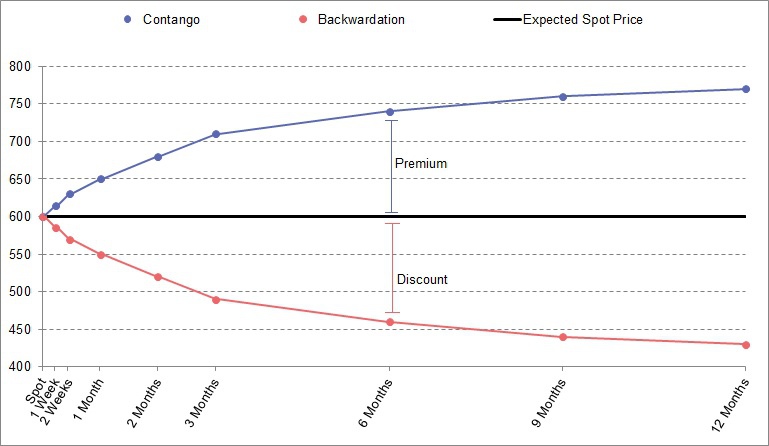
Based upon these economic realities a variety of arbitrage opportunities can present themselves when a producer can position their cash inventory against a very large premium in the distant months of the commodity. The payoff is not immediate as in the previous arbitrage example, but the arbitrage works because all pricing risk has been eliminated.
Let me explain:
Let’s say you own the underlying commodity at $5.00 in the current spot market. Let’s further say that the futures price 8 months from now is $5.60. An arbitrageur in this instance would sell an equal amount of inventory in the distant month to lock in the basis, which is the price differential of .60 cents. The only certainty that we know, is that in 8 months’ time the spot price and the futures price will be the same price. In other words, the long position in the spot, cash inventory and the short position in the futures will offset one another.
Let’s do the math and look at some worst-case situations. If the price of the commodity goes to ZERO, the accounting on the arbitrage is as follows:
Long Cash @ $5.00 results in a loss of $5.00.
Short futures contract 8 months out at $5.60 results in a profit of $5.60.
The arbitrageur has locked in the basis of .60 as their profit. They are market neutral.
This same result will occur at any price in the future as long as the arbitrageur can hold the position till the expiration date. If prices explode higher the “arb” will make money on the cash position and lose of the futures, but the result will always be the same, a net profit of .60 cents as long as the position is held till expiration.
Can it be this simple? Yes and No.
In the real world this is called a cash and carry trade. What a producer must consider whenever they enter in a contango trade is:
- The price of the futures market in the distant month where they want to capture the price differential.
LESS
2. The “cash” or “spot” price of the commodity which is the price for delivery today.
3. The cost of transporting the commodity to its storage location.
4. The cost of storage of the commodity.
5. The cost of insurance.
6. The cost of financing the underlying asset.
When the sum of variables 2 through 6, also known as the carrying cost, is less than variable 1, a producer can earn an arbitrage with virtually no risk by owning the cash market, placing it in inventory and selling a distant futures contract against it. Exchanges will often create special margin requirements for these producers because they recognize that there is no risk in this type of hedging scenario.
When we analyze the variables of this trade, we can see that a producer has no control over the current price, or the futures price. However, they do have a great deal of control over understanding and executing their storage, financing, and transportation costs in their production cycle.
What the Contango trade forces an arbitrageur to do is to comprehend their cost of capital and production cost. I would argue this is probably the most important economic function and variable in the marketplace. While the returns are not massive on a percentage basis, they allow all traders to understand the risk and opportunity profiles that each market is advertising. Most importantly these returns are always annualized and compared to the risk-free returns that are available by investing in U.S. Treasury instruments.
Keep in mind, headlines come out every hour designed to capture trader’s attention. But what genuinely drives price action is arbitrageurs committing capital to markets in pursuit of yields where they can eliminate risk. When these opportunities exist, they become the key price driver for a market. In the beginning of 2021, bitcoin was advertising risk free arbitrage yields of 20% annualized. Stop and think about that! Is it possible that yield was responsible for the volatility we have seen in the top cryptocurrency so far this year? If you were a bitcoin whale and had millions or billions of dollars of bitcoin in your possession would that yield entice you to go sell the distant futures contracts against your position to lock in the basis?
Compare this bitcoin arbitrage risk free yield, to the following yields in the U.S. Treasury market.

Is this not the most important dichotomy driving the financial markets today? If you were an international financier with access to billions of dollars, how much would you commit to a risk-free arbitrage yield?
Money gravitates to wherever it is treated best. This is one of the unintended consequences of interest rate manipulation by the government. There are currently over $17 trillion dollars locked up in negative-yielding Treasury Bonds. Why would any investor commit their funds to a U.S. Treasury Bond when a risk-free yield worth 10 times as much was available by arbitraging bitcoin futures against your cash holdings? As you ponder this reality think of the domestic and international Public Pension Funds which are massively underfunded. Do you think they could benefit by capturing this type of return for their pensioners? Most pension funds need a 7% return to remain viable and they cannot achieve any yield comparable to what is needed by chasing U.S. Treasury yields at 2%.
There are temporary arbitrage opportunities in a contango market. But as long as the most creditworthy companies have access to liquidity, in the form of credit lines, they will likely keep the spreads relatively narrow. The contango trade is ultimately a cost of capital competition – one that is won by companies with the cheapest capital. Yields may appear small on the surface, but if your cost of capital is 1% and your return is 6% the ROI is massive.
The only drawback to this strategy is that an arb trader is giving up the further upside potential on the underlying asset for the guaranteed return that they can receive by implementing the trade now.
Here is a twitter post from January 18th from two prominent bitcoiners discussing the 20% arb yield on bitcoin.
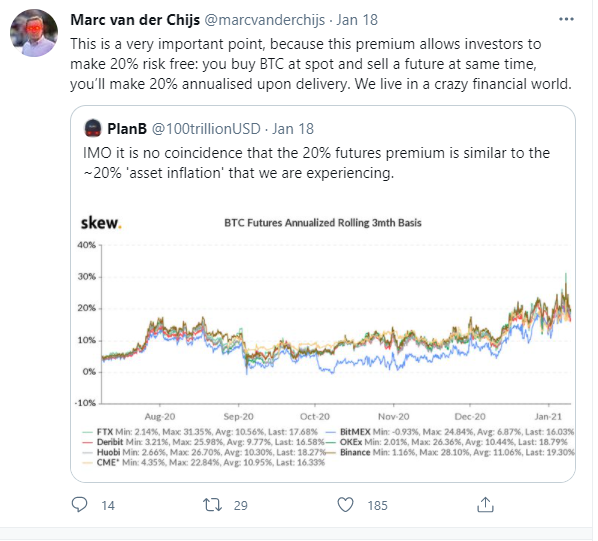
Let’s look at the current pricing terrain in the Bitcoin marketplace.
$56,405 is the spot price
$56,620 – 1 month out
$57,050 – 3 months out
$58,750 – 7 months out
$60,150 – 19 months out
Over the past several weeks, the basis which is the price differential between the spot market and the distant months has massively contracted in bitcoin. Could this simply be because arbitrageurs are simply buying the spot market and selling the distant futures against their cash position?
Personally, I think this is one of the most fascinating metrics you can be paying attention to in the financial marketplace.
Futures contracts trade on the Chicago Mercantile exchange as well as a handful of smaller exchanges like Deribit and Binance. What makes this fascinating is that arbitrage was a trade that was almost only exclusively available to the very large, well-financed speculator. Today, this trade was available to everyone. More importantly, the futures contracts on the Chicago Mercantile exchange cater to different sizes. The larger bitcoin contract requires five bitcoins. The medium size is one bitcoin. And the smallest micro futures bitcoin contract just began trading on Monday, May 3rd is only 1/10th of a bitcoin in size.
This might not make any sense to a beginning trader, but it is the most real strategy used by advanced traders to eliminate risk in the markets. Essentially, you are being paid to hold your bitcoin for a certain amount of time. You may also have some transactional and custodial costs to cover if you are delegating custody to a third party. Also, worth considering is that this type of strategy takes bitcoin off the market, lowering the potential supply. Arb traders who are not interested in speculating on the future price of bitcoin are using the asset to earn above average yields.
At present time, the yields on this trade have fallen dramatically which I think explains the recent volatility which bitcoin has experienced. What is worth pondering though, is even at these reduced levels you can see how bitcoin is advertising a significantly higher risk-free yield than Sovereign debt.
Ponder that bitcoin has a market cap of roughly $1.1 trillion. Sovereign debt around the world is $119 trillion. You don’t have to be a fan of bitcoin to recognize the threat to money flows that bitcoin presents.

So, what exactly does this have to do with you?
Bitcoin has become the most transparent monetary system in the world. Everyone knows the full, finite supply.
Everyone knows exactly how many bitcoins are in circulation.
Everyone knows what the daily available supply is.
We know what it is today. And we know what it will be in the future. Every monetary policy decision is clearly written into the code.
Everyone in the world can audit the system.
Everyone can verify for themselves the monetary policy.
Full transparency. Full programmatic monetary policy.
In a world of central banking where lack of transparency is the default, bitcoin ushers in a valuable new model. And as I have just described it is now offering risk free yields several multiples higher than U.S. Sovereign debt.
The implications of this reality are deeply profound to the financial markets.
There are investors around the world, who are responsible for trillions of dollars in assets. These individuals dissect Federal Reserve press conferences and transcripts looking for clues in adjectives that might provide a hint of the Federal Reserve’s future behavior. And trades like the ones I just described illustrate how it is being disrupted…
Who wants to live in a world where massive uncertainty is the default? How has the unprecedented volatility affected your decision making? What method do you have to generate above average returns consistently in these markets?
We live in very exciting times. Outcomes today are clearly being decided by how traders define risk.
Machine Learning is designed to learn from experience and make the best statistically relevant decision moving forward. A.I. outperforms humanoid analysis hands down every time.
Since artificial intelligence has beaten humans in Poker, Chess, Jeopardy and Go!, do you really think trading is any different?
Are you capable of finding those markets with the best risk/reward ratios out of the thousands of trading opportunities that exist? Forecast bitcoin and so much more using A.I.
Knowledge. Useful knowledge. And its application is what A.I. delivers.
Artificial intelligence is not “a would be nice to have” tool.
It is an “absolutely must have” tool to flourish in today’s global markets.
Intrigued? Click here – Next Free Live Training.
It’s not magic. It’s machine learning.
Make it count
THERE IS SUBSTANTIAL RISK OF LOSS ASSOCIATED WITH TRADING. ONLY RISK CAPITAL SHOULD BE USED TO TRADE. TRADING STOCKS, FUTURES, OPTIONS, FOREX, AND ETFs IS NOT SUITABLE FOR EVERYONE.IMPORTANT NOTICE!
DISCLAIMER: STOCKS, FUTURES, OPTIONS, ETFs AND CURRENCY TRADING ALL HAVE LARGE POTENTIAL REWARDS, BUT THEY ALSO HAVE LARGE POTENTIAL RISK. YOU MUST BE AWARE OF THE RISKS AND BE WILLING TO ACCEPT THEM IN ORDER TO INVEST IN THESE MARKETS. DON’T TRADE WITH MONEY YOU CAN’T AFFORD TO LOSE. THIS ARTICLE AND WEBSITE IS NEITHER A SOLICITATION NOR AN OFFER TO BUY/SELL FUTURES, OPTIONS, STOCKS, OR CURRENCIES. NO REPRESENTATION IS BEING MADE THAT ANY ACCOUNT WILL OR IS LIKELY TO ACHIEVE PROFITS OR LOSSES SIMILAR TO THOSE DISCUSSED ON THIS ARTICLE OR WEBSITE. THE PAST PERFORMANCE OF ANY TRADING SYSTEM OR METHODOLOGY IS NOT NECESSARILY INDICATIVE OF FUTURE RESULTS. CFTC RULE 4.41 – HYPOTHETICAL OR SIMULATED PERFORMANCE RESULTS HAVE CERTAIN LIMITATIONS. UNLIKE AN ACTUAL PERFORMANCE RECORD, SIMULATED RESULTS DO NOT REPRESENT ACTUAL TRADING. ALSO, SINCE THE TRADES HAVE NOT BEEN EXECUTED, THE RESULTS MAY HAVE UNDER-OR-OVER COMPENSATED FOR THE IMPACT, IF ANY, OF CERTAIN MARKET FACTORS, SUCH AS LACK OF LIQUIDITY. SIMULATED TRADING PROGRAMS IN GENERAL ARE ALSO SUBJECT TO THE FACT THAT THEY ARE DESIGNED WITH THE BENEFIT OF HINDSIGHT. NO REPRESENTATION IS BEING MADE THAT ANY ACCOUNT WILL OR IS LIKELY TO ACHIEVE PROFIT OR LOSSES SIMILAR TO THOSE SHOWN.





